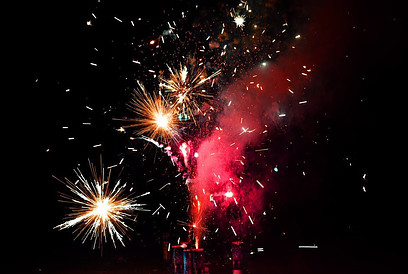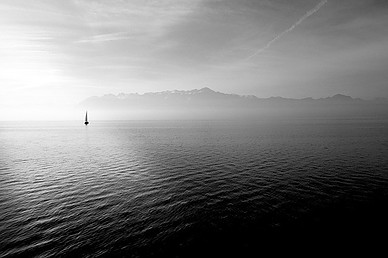Traveling
if you find yourself in an accident at sea and an S.O.S. has been sent, or if you happen to know that you are near shipping lanes, it is probably a good idea to remain where you are for at least 72 hours.
However, if none of these circumstances apply then you should waste no time in taking action. You will be at your peak energy and fitness and will have the best chance to apply any required survival methods. This is especially true if you know land to be nearby and downwind from your position. If you know there is no land nearby, attempt to locate the nearest shipping lane and head in that direction. This may not sound easy, but shipping lanes are more prolific and common as world traffic and commerce has significantly increased in the past century.
Your craft will naturally move with the current and the wind. In open seas currents rarely exceed a speed of 6 – 8 miles (9 – 13 km) per day. Take in the sea anchor if one is present and use the wind if you can. In a ship with no keel the only option you have is to sail at full speed with the wind or at most, at an angle of 10 degrees off it.
Use a paddle as a rudder (I’ve done this during river kayaking – the front person controls speed with their paddle and the rear person controls direction with their paddle) but if the wind direction is against you, use the sea anchor to maintain your position until you’re able to freely navigate.
To use the wind you need to first make sure your raft is fully inflated. Then, sit as high as you can in the raft and improvise a makeshift sail of clothing or a tarp, if one is not available. Do not secure the lower lines, but hold them manually. This is in care a sudden wind gust occurs. If the sail is secured, you run the risk of capsizing. However, if you’re holding it manually, you can let go and avoid taking an unnecessary bath.
If you find yourself in rough seas, put the sea anchor out in front of the boat. This will always keep the bow facing the wind and prevent capsizing. Stay low in the raft – do not sit on the sides or stand up and don’t make any sudden movements. If there are several rafts in the group, string them all together.
Take these factors into consideration when deciding to either remain where you are or change position:
- The amount of information signaled before the accident
- Do potential rescuers know your location? Do you know it yourselves?
- Do weather conditions permit a reasonable search?
- Are other ships or aircraft likely to pass around your present position?
- How long will your supply of food and water potentially last?

Signaling
When it comes to being detected at sea, flares, dyes and movement of any kind are the best ways to attract attention. If you have no signaling equipment, wave any clothing or tarps and churn the water if it still. However, at night, a flare is your best chance at detection.
If in a group of survivors, staying within visual range is easy – during the day. At night, or in fog, a whistle is your best chance at determining their location and keeping others informed of yours.
If you are fortunate enough to be in a raft where a radio transmitter is part of the equipment aboard, the instructions can usually be found on its side. Frequencies are usually preset at 121.5 and 243 MHz with the range usually being about 20 miles (32 km). Transmit at regular intervals but be extremely prudent when using battery powered transmitters. The batteries are one of your most precious possessions and should be treated as such. Your radio will be useless without them.
Sea markers, which release dyes into the water, are only useful during the day and unless the seas are very rough the dye should be visible for at least three (3) hours.
Pyrotechnic supplies, such as flares, need to be kept dry and secure. Read the instructions carefully before use and heed any warnings. “Day-and-Night” flares are very useful as one end produces smoke for daytime use. Always keep in mind that when using flares you are actually holding a dangerous firework in your hand. So remember to never point it down, towards yourself or another person.
Use flares only when you are SURE they will be seen and fire them in a way or a direction to make sure that they are. For example. Use them as a plane is flying towards you, not when it’s flying away. If flares or smoke are not available, the use of heliograph signals (reflecting sunlight off a shiny object) have attracted attention. A lot of rescues have occurred after the use of such devices. Any shiny, reflective surface can be used to signal in this way.
